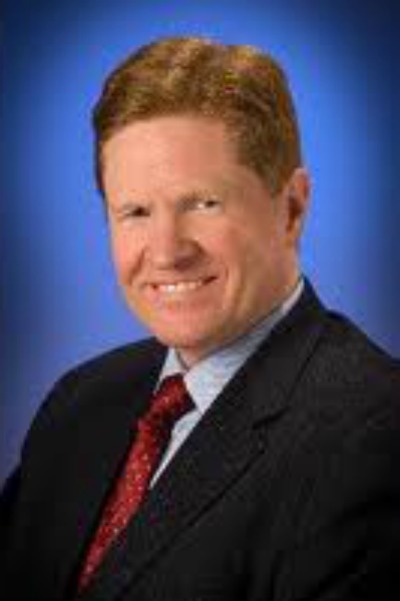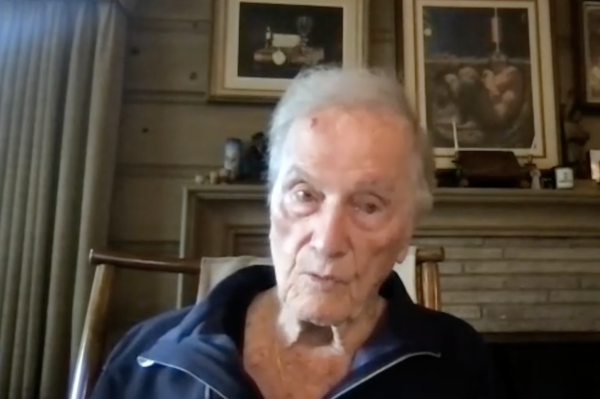Is Marriage Declining Despite Same-Sex Unions or Because of Them?

An article in the Washington Examiner on September 18 carried the headline:
"Census: Marriage rate at 93-year low, even including same-sex couples."
The article states:
"The Census Bureau reported Thursday that the nation's marriage rate is the lowest since 1920, and the first-time inclusion of same sex married couples did little to reverse the decline."
The Examiner was citing a Pew Research Center analysis of new data from the Census Bureau's 2013 American Community Survey. Pew described the story this way:
"The Census Bureau released new data today that for the first time counted same-sex spouses along with all other married couples in its largest household survey, which, despite the new additions, showed no reversal in the long-term national decline in marriage."
The Examiner and Pew Research Center both seem to consider it somehow ironic, paradoxical, or counter-intuitive that the marriage rate is declining "even" with or "despite" the inclusion of "same sex married couples" for the first time. After all, civil marriage licenses are now issued to same-sex couples in nineteen states and counting. Wouldn't opening the door to legal marriage for a whole new population that (presumably) would not have married before—namely, people with homosexual partners—be expected to boost marriage rates, at least temporarily?
I was not at all surprised by this data, though. It is consistent with three important facts that everyone following the debate over the homosexual redefinition of marriage should know:
1) As a percentage of the overall U.S. population, the homosexual population is tiny.
This was demonstrated once again in a recent federal survey whose results were released in July 2014. It found that only 1.6% of American adults self-identify as "gay" or "lesbian," with another 0.7 percent self-identifying as "bisexual." The National Health Interview Survey, conducted under the auspices of the National Center for Health Statistics in the Centers for Disease Control and Prevention, collected data from a large sample of 34,557 adults through 2013.
Although plenty of evidence was already available, this finding reinforced the fact that the widely reported claim that "one in ten" people is homosexual is sheer mythology. The "10 percent" figure was a misinterpretation of a statement made by the notorious sex researcher Alfred Kinsey in the 1940's, and his "research" has long since been discredited. However, a 2011 poll by Gallup showed that the ubiquitous presence of homosexual activism in our politics and of homosexuals or pro-homosexual agitation in our media has led a majority of Americans to the astonishing belief that over 20 percent of the population is homosexual—more than ten times higher than the actual number.
The reality is that homosexuals are not one in five Americans, or one in ten, or even one in twenty. In reality, only about one in sixty Americans self-identifies as homosexual.
2) The percentage of the homosexual population that consists of people living together in long-term, committed partnerships is significantly lower than the percentage of the heterosexual population that does so.
The 2010 census collected information on both "husband-wife households" and "unmarried partner" households, with the latter being broken down into opposite-sex and same-sex partners. We can calculate the number of opposite-sex couples by adding together "husband-wife" and opposite-sex "unmarried partner" households. All same-sex couples, at the time of the 2010 Census and reports based on it, were classified as "unmarried partners" even if legally "married" in some state, because the federal Defense of Marriage Act (in a provision struck down by the Supreme Court in June 2013) had prohibited any federal agency from regarding them as "married."
These calculations result in a conclusion that only about 34.5 percent of the homosexual population consists of people living together in a partnership, whereas 54.9 percent of the remaining population live together in an opposite-sex partnership of some type. (Note also that if we increase the estimate of people interested in same-sex relationships—for example, by including bisexuals—that would only reduce the percentage figure, while if we limit the opposite-sex calculation only to the 96.6 percent who explicitly self-identify as "straight," it would increase that percentage).
These figures suggest that heterosexuals are about 60 percent more likely to form long-term, committed partnerships than homosexuals are.
3) Even homosexuals who are already in a committed, long-term relationship with a partner are much less likely to legally marry, even if they live in jurisdictions that already permit them to do so.
The most recent data from the Census Bureau, the American Community Survey for 2013, includes an estimate (from a large sample, but not from a canvas of the entire population like in the decennial census itself) that there are now 726,600 same-sex couple households in the United States. Of those, 34.6 percent report themselves to be same-sex "spouses."
Not all of those couples (about 250,000) are necessarily legally "married," however. The Census Bureau relies entirely on the respondent's self-report as to the couple's relationship, and does not inquire into whether they have obtained a legal civil marriage license. In 2010, an openly homosexual Census Bureau official actually urged same-sex couples to indicate they were "married" even without a legal marriage license. Therefore, the percentage of same-sex couples who are legally "married" in the U.S. is probably even lower than 34.6 percent.
The Pew Research Center reported in June of 2013 that only 71,165 legal same-sex "marriages" could be confirmed to have taken place in the United States. While the actual number is certain to be higher (Maryland and DC had not yet reported numbers of same-sex unions since they had redefined "marriage," and some couples have "married" in other countries), it is nowhere near 250,000.
Of course, a majority of states still do not issue civil marriage licenses to same-sex couples. (Virtually all states that do, however, will allow people from any state to marry there, so being unable to obtain such a license in one's state of residence is no bar to getting "married" in another state.) Nevertheless, even if we look at data only for the seven U.S. jurisdictions that had already permitted same-sex "marriages" for more than a year before 2013 began (Massachusetts, Connecticut, Iowa, Vermont, New Hampshire, D.C., and New York), we find that the percentage of same-sex couples who reported as "spouses" in those states was barely over half, at 54.9 percent.
This is in sharp contrast to the situation among opposite-sex couples. Despite the dramatic increase in cohabitation in recent decades, 89.3 percent of all opposite-sex couples who live together are married, with only 10.7 percent cohabiting without benefit of marriage. To put it another way—same-sex couples who live together are at least four times as likely as opposite-sex couples to reject marriage, even when it is available to them.
The combination of these three factors—the minuscule size of the homosexual population, the failure of most homosexuals to form long-term relationships, and the ironic unwillingness to marry (despite the zealous campaign for the "right" to do so) on the part of nearly half of cohabiting homosexual partners—all add up to same-sex "marriages" being an almost negligible factor in the number of "married-couple" households. Only 0.45 percent of all such households—about 1 in 220—are headed by self-described same-sex "spouses."
Setting a bad example
The fact that homosexuals are much less likely than heterosexuals to enter into committed relationships, and are much less likely to solemnize such relationships in marriage even when they have formed them, should seriously call into question the myth of the marriage redefinition movement that there is no difference between homosexual and heterosexual relationships except the gender of their partners.
However, it should do even more than that. It should raise an alarm about one of the implications of redefining civil marriage to include same-sex couples. Advocates of redefinition often ask how a same-sex couple getting married could possibly hurt anyone else. Ironically, their rejection of marriage, even when offered to them, may be one source of harm.
We are all influenced by the behavior of those around us. Seeing our friends, neighbors, classmates and co-workers sleep around in casual relationships with no commitment makes it seem more acceptable for us to do the same. Seeing them live together rather than make a life-long commitment in marriage makes it more thinkable for us to follow suit. Seeing couples around us divorce may make divorce seem like an option for us, too.
If we redefine marriage to include homosexual relationships, it will amount to an official declaration, as a matter of public policy, that homosexual relationships are indistinguishable from heterosexual ones. As a consequence, heterosexuals will become more likely to look to their homosexual acquaintances—and their sexual and relationship conduct—as role models for themselves. But what homosexuals model is a lack of committed relationships in general and a lack of commitment to marriage in particular.
Therefore, as a growing number of heterosexuals begin to follow the example of the homosexuals with which they are acquainted, a likely consequence of redefining marriage will be, ironically, that fewer people will marry at all. So the long-term decline of marriage will continue not in spite of same-sex "marriage," as the Washington Examiner and the Pew Research Center seemed to assume, but because of it.
This is only one of the harms which should give pause to our nation in general—and our courts in particular—about rushing into the radical social experiment of redefining marriage.






















